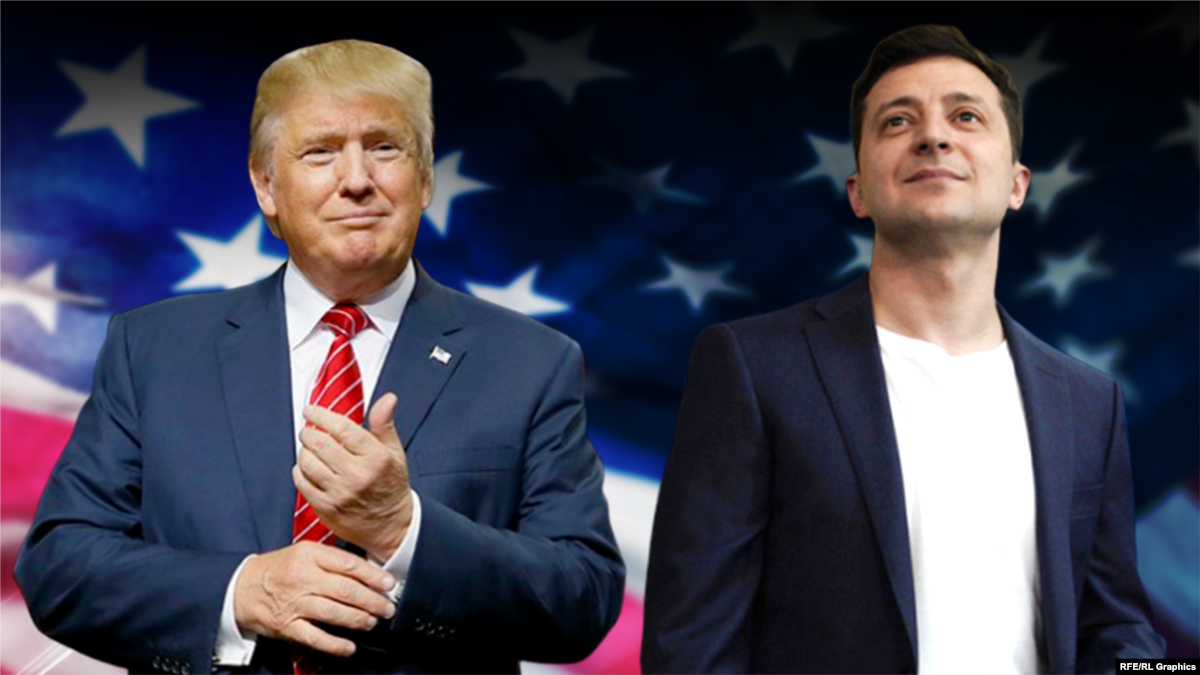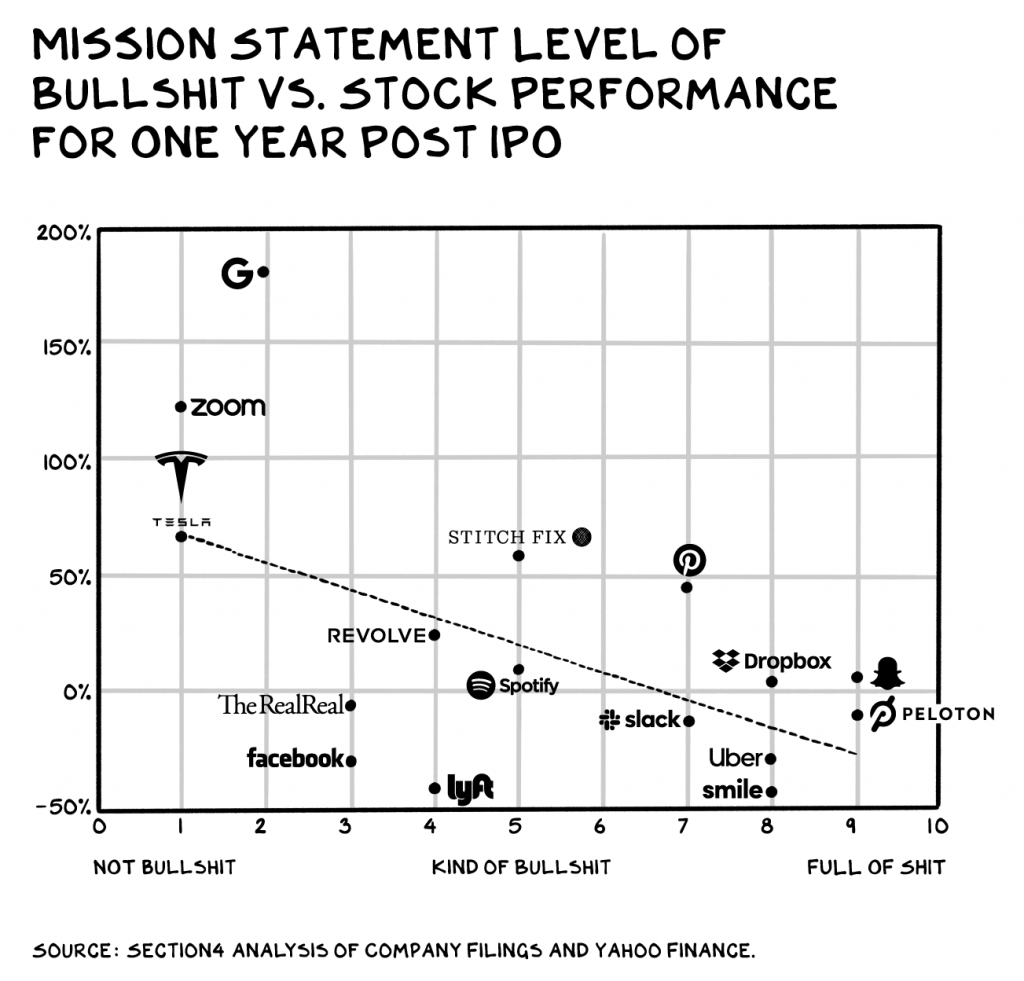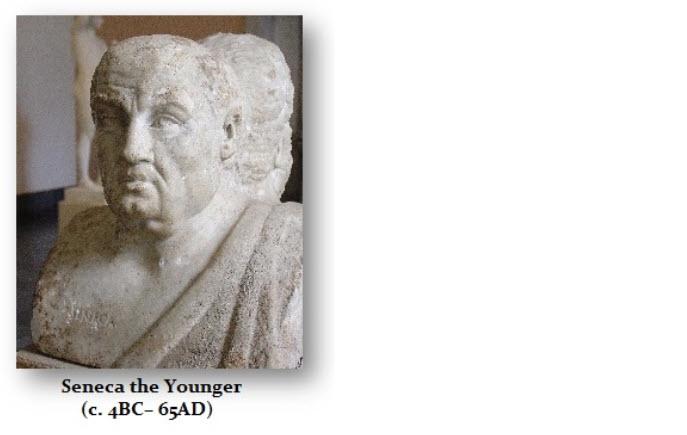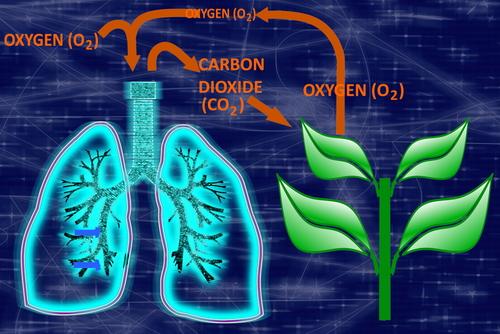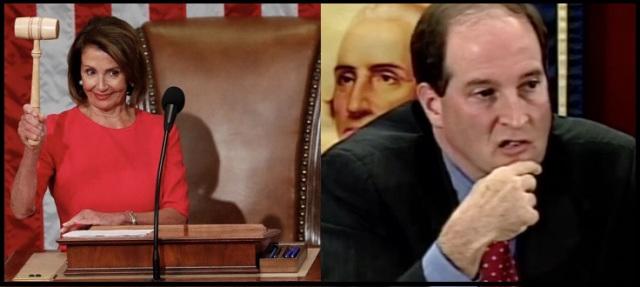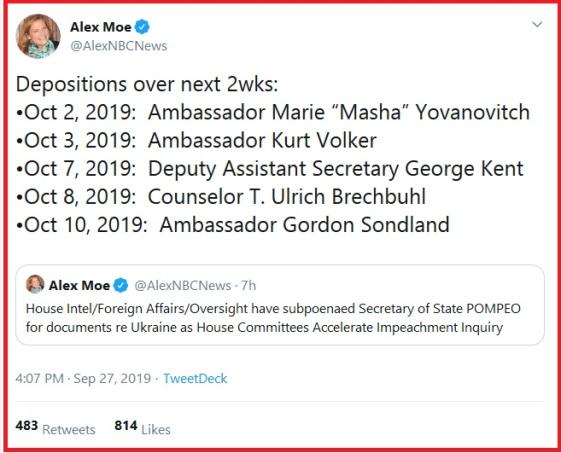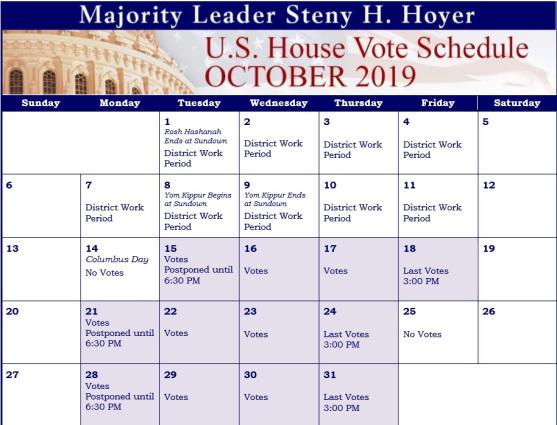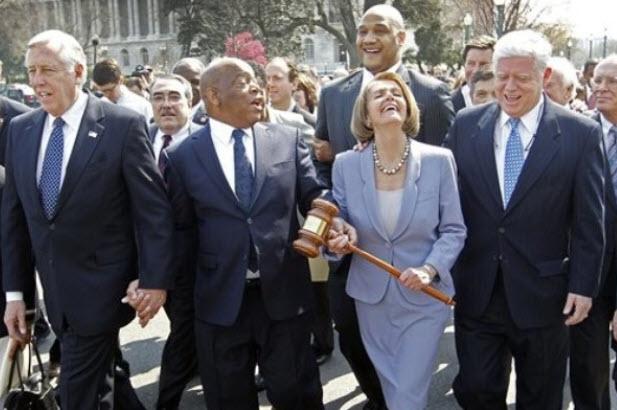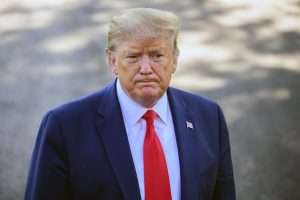
Last week, I wrote a post explaining why, if Trump used withholding of US aid as leverage to try to force the president of Ukraine to investigate Joe Biden and his son, it would be an unconstitutional usurpation of Congress’ power of the purse. Quite simply, it would be a case of the president trying to use federal funds for a purpose that had never been authorized by Congress—the only branch of government with the power to authorize federal spending.
Since then, a great deal of relevant evidence has become public, including the transcript of at least part of Trump’s phone call with Ukrainian President Volodymyr Zelensky, the report of the “whistleblower” who played a key role in bringing this issue to public attention, and the report of the intelligence community inspector general assessing the whistleblower’s complaint. Taken together, this evidence strongly supports the notion that Trump did indeed try to use the aid funds as leverage. If so, he both violated the Constitution and committed a federal crime.
The spending power issue is far from the only problematic aspect of this transaction. Trump may have committed a number of other federal crimes in the process, as well. But it is one that has not—so far—gotten the attention that it deserves.
It is difficult to read the transcript of the Trump-Zelensky phone call without coming to the conclusion that a quid pro quo—aid in exchange for investigation—is the most likely interpretation of what Trump was trying to do. Conservative lawyer and political commentator David French has a good explanation of the reasons why this interpretation makes sense (see here and here):
I haven’t been a litigator since 2015. I haven’t conducted a proper cross-examination since 2014. But if I couldn’t walk a witness, judge, and jury through the transcript of Donald Trump’s call with Ukrainian president Volodymyr Zelensky and demonstrate that a quid pro quo was more likely than not, then I should just hang up my suit and retire in disgrace…
First, right near the beginning of the call, President Trump signals his displeasure with Ukraine. He notes that while the United States has been “very good” to Ukraine, he “wouldn’t say” that Ukraine has been “reciprocal” to the United States. There’s nothing subtle about this statement. It’s plain that Trump wants something from Ukraine….
In the next paragraph, Zelensky responds with the key ask. He wants more Javelin missiles, an indispensable weapon system in Ukraine’s conflict with Russia. It’s an anti-tank missile that helps address the yawning power imbalance between the two countries….
And what is Trump’s response? The next words out of his mouth are, “I would like you to do us a favor though because our country has been through a lot and Ukraine knows a lot about it.” He raises Crowdstrike, the firm the DNC used to investigate the Russian election hacks. From context, it seems as if Trump is asking for additional assistance in investigating the 2016 election-interference scandals….
But then, in the following paragraph, Trump continues his ask. He says he is going to ask Rudy Giuliani, his personal attorney, to call Zelensky, and he asks Zelensky to take the call. Then, Trump says this: “The other thing, there’s a lot of talk about Biden’s son, that Biden stopped the prosecution and a lot of people want to find out about that, so whatever you can do with the Attorney General would be great.” He continues, “Biden went around bragging that he stopped the prosecution so if you can look into it . . . It sounds horrible to me.”
And what is Zelenksy’s response? He pledges that the new Ukrainian prosecutor will be “100 percent” his person and that “he or she will look into the situation.”
The quid pro quo interpretation of this exchange derives further support from the fact that Trump had just put a freeze on the delivery of some $400 million in US aid to Ukraine, and had also made clear to Ukrainian officials that he would not even do a call with President Zelensky, unless the Biden investigation was on the agenda. Trump has since claimed that the aid freeze was put in place out of concern about corruption in the Ukrainian government. But that story is undercut by the fact that the Trump administration had previously certified that Ukraine had taken sufficient steps to combat corruption to qualify for the aid.
A clever lawyer could parse all these statements and actions in such a way as to put a more innocent spin on them. We do not —so far—have proof of a quid pro quo, beyond reasonable doubt. But, as David French explains, that is by far the most likely explanation.
Some might say there was no real harm here, as Trump did eventually release the aid in September, after members of Congress made inquiries on the subject. But a failed effort to subvert Congress’ spending powers is still constitutionally problematic. Moreover, Trump’s scheme to use the aid may not have failed. It is entirely possible he thought he had succeeded. After all, the transcript indicates that President Zelensky promised to reopen the investigation in response to Trump’s veiled threats, and it appears that this may yet happen.
The whistleblower’s report also suggests a link between the pressure tactics used on the phone call and the earlier decision to withhold aid payments, though it is not as clear on this point as the transcript of the phone call. And the report of the Inspector general concludes that the whistleblower was “credible” and right to be concerned about the situation, even if it also indicates that there were “indicia of an arguable political bias” in favor of a “rival political candidate,” by the whistleblower.
For reasons indicated in my earlier post, circumventing Congress’ power of the purse is a serious violation of the Constitution, and one that could set a dangerous precedent if Trump manages to get away with it. If the president can use withholding of federal funds as leverage to pressure people to do his bidding in ways not authorized by Congress, that opens the door to numerous potential abuses of power. And this is not an isolated case, but merely the latest of several instances in which the Trump administration has tried to usurp the power of the purse.
At the very least, it’s a legitimate subject for an impeachment inquiry. Both the Founding Fathers and most modern legal scholars believe that impeachment does not require a violation of criminal law, but rather is an appropriate remedy for serious abuses of executive power, particularly those that undermine the integrity of the constitutional system.
Many laypeople, however, understandably assume that the commission of a crime is required by the Impeachment Clause, which states that impeachment can be used to remove a president for the commission of ” treason, bribery, or other high crimes and misdemeanors.” It turns out, however, that a quid pro quo scheme like the one Trump apparently engaged in does qualify as a federal crime. Specifically, it would be a violation of 18 USC Section 601, which criminalizes “knowingly caus[ing] or attempt[ing] to cause any person to make a contribution of a thing of value (including services) for the benefit of any candidate or any political party, by means of the denial or deprivation, or the threat of the denial or deprivation, of…. any payment or benefit of a program of the United States,… if such employment, position, work, compensation, payment, or benefit is provided for or made possible in whole or in part by an Act of Congress.” Violators are subject to a fine, a prison sentence of up to one year, or both.
Section 601 pretty clearly covers this quid pro quo scheme. The aid money is a “payment or benefit of a program of the United States,” one that is “made possible… by an act of Congress” (which appropriated the money). An investigation of the president’s most likely Democratic opponent in the 2020 general election is obviously a “thing of value (including services)” that benefits a candidate or a political party; in this case, Trump and the GOP. At the time Trump made the call, Biden was the leading contender for the Democratic nomination, even though Elizabeth Warren may have caught up to him since then. And, if Trump made the quid pro quo threat at all, he surely did so knowingly and with full awareness of the potential political advantages. Finally, Section 601 criminalizes attempted use of funds as leverage to gain political support, not just successful efforts to do so. Even if Trump’s pressure tactics failed to achieve their goals, he still violated 601.
As already indicated, I do not think the existence of a quid pro quo can be proven beyond a reasonable doubt, based on currently available evidence. But impeachment is not a criminal trial and does not require that level of proof. The relevant rules of evidence and standards of proof are up to Congress to determine.The latter could reasonably conclude that a preponderance of evidence is proof enough. Removing a dangerous political leader from a position of power is not the same thing as depriving a person of life, liberty, or even property rights, and does not threaten civil liberties and human rights in the same way as a wrongful criminal conviction does.
Moreover, additional evidence may yet emerge, as Congress investigates. For example, given the administration’s history of untrustworthiness on such matters, it is not clear that we actually have the full transcript of the phone call between Trump and Zelensky.
Just as impeachment does not require the commission of a crime, so too not every violation of federal criminal law justifies impeachment. For example, few would argue that a president should be impeached if it turns out that he has used marijuana a few times, even though marijuana possession is a federal crime.
In my view, a high proportion of the federal crimes on the books either should not be crimes at all, cover matters that are best left to the states, or both. But Section 601 is one of those comparatively rare federal criminal laws that actually serve a good purpose: preventing officials from using federal spending as leverage to pressure people into backing a political campaign.
Given the vast number of federal spending programs out there, it is easy to see how such leverage could be misused. Imagine, for instance, an effort to pressure federal contractors into backing the president or influential members of Congress on pain of losing their contracts, or similar pressure directed at recipients of any number of other federal program benefits.
And, obviously, Ukraine is far from the only foreign government that receives US military or economic aid. It would be dangerous to allow presidents to use that aid as leverage in exchange for electoral assistance.
In the long run, I believe we should greatly reduce the number of people (and foreign governments) dependent on federal grants, contracts, and spending programs. But, in the meantime, we should at least prevent presidents from using these programs as leverage to force people to support their campaigns.
As Keith Whittington properly reminds us, impeachment is not mandatory, even in cases where it is constitutionally permitted. It’s ultimately up to the discretion of Congress. And, as a practical matter, impeachment is as much a political action as a legal one. The House is unlikely to impeach and the Senate even more unlikely to convict, in the absence of broad political support. Partisanship and political calculations are likely to influence Congress’ decision-making at least as much legal and moral considerations—probably more so. It would be naive to imagine otherwise.
Whether there is sufficient political support for impeachment in this case remains to be seen. It is also not yet clear whether impeachment here is a good idea on prudential grounds. But the constitutional issues at stake are important, and the evidence easily damning enough to warrant giving impeachment serious consideration.
from Latest – Reason.com https://ift.tt/2lXXPSL
via IFTTT
